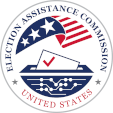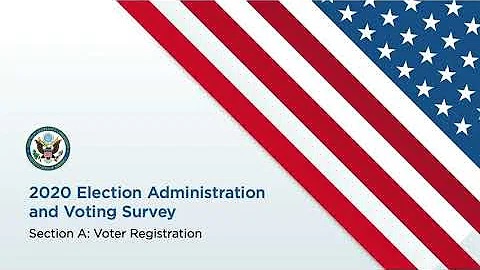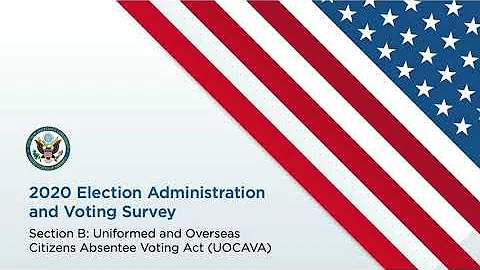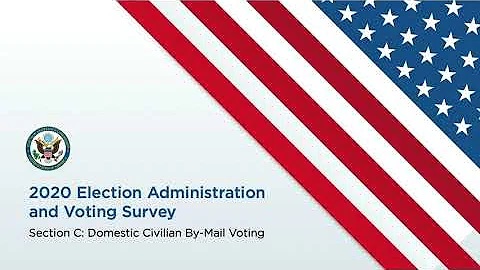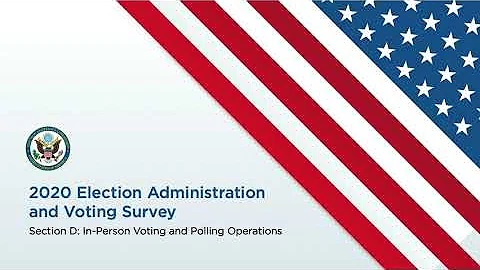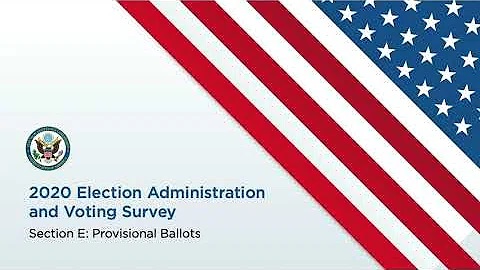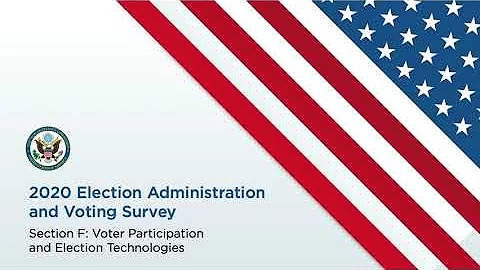2020 Archived Resources
Videos (9)
EAVS Template User Guide
- This document provides step-by-step instructions on how to use the data collection templates that have been created to support the 2020 EAVS. For the Excel template and online template, this user guide outlines how to access each template, how to navigate within the template, how to enter and error check data, and how to submit data. For state officials, this user guide also outlines how data ports from the online template to the Excel template and how to customize the online template for your jurisdictions to use.
EAVS Policy Guide
- This document provides information to election officials responsible for completing EAVS. It outlines what data is collected, the process and timeline for data submissions, how the EAC reports the results of the data, how updates to EAVS data sets are released to the public, and how the EAC makes changes to the survey questions.
Updates to 2020 EAVS Data
If your state or territory has a correction to your 2020 EAVS submission, please contact research@eac.gov. Updated EAVS data will be released on a quarterly basis to the EAC’s website. Please submit your data corrections by the following dates:
- June 30, 2021
- September 30, 2021
- December 31, 2021
- March 31, 2022
Newsletters (11)
- This newsletter provides details on how the EAVS questions and survey procedures have changed since 2018. It also highlights the Excel Crosswalk available on the EAVS Portal and a new EAVS policy document issued by the EAC.
- Your state’s Policy Survey submission provides important context to your EAVS data, and your data collection templates this year will feature custom validations to ensure your EAVS data aligns with your Policy Survey responses. This newsletter outlines how those validations will help reduce survey response burden and assist you in submitting more accurate EAVS data.
- This newsletter provides information about the two data collection templates that will assist you in submitting data for the 2020 EAVS: the Excel template and the online template. It also highlights EAVS items that you may be able to collect in advance of the November 3, 2020 election.
- The data collection period for the 2020 EAVS has begun! This newsletter outlines the resources that are available to assist you with your data submission and outlines important dates to keep in mind.
- The 2020 EAVS templates contain data validations to improve the quality and accuracy of your data. This newsletter explains the four types of validations that are used and how they appear within the Excel and online templates. In addition, it highlights the EAVS items that may be pre-filled in your state’s or territory’s data templates based on your Policy Survey responses and invites EAVS POCs to revisit their Policy Survey submission for accuracy, as some election policies may have changed since you submitted your state’s or territory’s data.
- The 2020 General Election saw an increase in mail voting in nearly every state and territory. This newsletter explains the three types of mail voting that EAVS collects data on—military and overseas ballots, domestic civilian absentee or mail ballots, and ballots in states or jurisdictions where all voting is done by mail—and how these ballots and voters are to be reported in Sections B, C, and F of the survey.
- States that rely on local jurisdictions to directly provide data for the 2020 EAVS, as well as territories and states that report their EAVS data as a single jurisdiction, may use the online template in their data collection plans. This newsletter shows how the EAVS Portal can be used to manage these submissions by downloading and reviewing data submitted through the online template, submitting this data to the project team for review, and tracking jurisdictions' progress through the online template.
- With the first data submission deadline only a few weeks away, this newsletter covers some of the most common questions the survey help desk has received about EAVS so far. If you have a question that is not covered in this newsletter, please contact the EAVS project team for assistance.
- After your state or territory submits its draft EAVS data by February 1, the EAVS project team will conduct an intensive review of the data. This newsletter describes what the project team looks for in these reviews, how the results of this review will be communicated, and how to incorporate the results of this review into your final data submission. This data review will help you ensure that your final, certified submission is as complete and accurate as possible.
- This newsletter follows up on Vol. 9 and discusses how your state or territory will finalize and certify its 2020 EAVS submission. This edition also covers how to make corrections to your data after you have certified it as final, if corrections are necessary.
- The 2020 EAVS data collection period is drawing to a close. This newsletter has information about how the EAVS data will be reported, when the data and EAVS Comprehensive Report will be released to the public, after-action on the 2020 EAVS, and preparations for the 2022 survey.
Excel Crosswalk
- This crosswalk documents the changes that have been made to the EAVS questions between 2018 and 2020 and lists the columns that correspond to each question within the Excel data collection template. States that use database queries to assist in compiling their EAVS data will find this document especially helpful.
